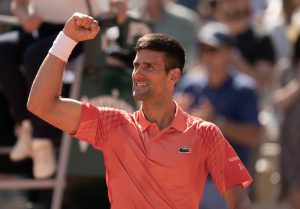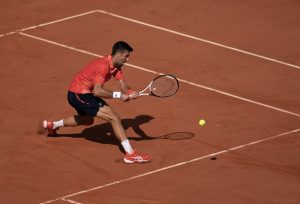On and off the court, the first week of the US Open has brought a healthy dose of entertainment. From the three double bagels served on the women’s main draw to Nick Kyrgios’ feuds with Fernando Verdasco, Stefanos Tsitsipas, Donna Vekic, Ben Rothenberg, his own box, New York Knicks fans conspiring to poach Kyrie Irving from his beloved Boston Celtics, and anyone who dared to kill him in Fortnite. However, no star has shined brighter than Peter Polansky.
Four Grand Slams: Eight Wins, Eight Losses for Polansky
By the time I wrote the Watchability Power Rankings, the Canadian had already secured a place in tennis’ history books by completing the Calendar Year Lucky-Loser Slam. With his quick loss to Alexander Zverev, Polansky’s 2018 singles record in Majors fell to right wins and eight losses. You read it correctly, the 30-year-old amassed eight losses in four Grand Slam tournaments this season. This “accomplishment” is as rare as it gets and warrants way more coverage than what it got.
No man had ever earned a LL berth in more than two Slams within the same season, or to three in a row. Off the top of my head, I recall Elias Ymer qualifying for all four Slams AND losing in the round of 128 every single time in 2015. Nevertheless, the 12-4 record posted by the young Swede isn’t nearly as striking as Polansky’s 8-8. Mimicking the 70-68 in the fifth ironman match by John Isner and Nicolas Mahut is more far-fetched, definitely. Yet a lot of variables must fall into place in order to replicate Polansky’s masterpiece.
Breaking Down the Legendary Lucky-Loser Slam
- The player must sit all year in between (roughly) No. 105 and No. 550 in the ATP rankings; i.e. good enough deserve a qualifying spot and get a Lucky Loser, but not too good to gain direct admission to the main draw.
- Polansky has remained stable all year long, peaking at a career-high No. 110 in June after bottoming at No. 143 in February. He was seeded in all four tournaments: No. 26 at the Australian Open, No. 14 at Roland Garros, No. 8 at Wimbledon and No. 12 at the US Open.
- The pro must be good enough to dominate the first two rounds of qualies but struggle to finish it off. Without delving into tactical matchups, Polansky pretty much followed the ranking-based script, with four exceptions.
- In Melbourne, then-No. 139 Polansky saw off Joao Domingues (No. 170) and Christian Harrison (No. 252) before succumbing to Yuki Bhambri (No. 119).
- In Paris, then-No. 124 Polansky defeated Norbert Gombos (No. 167) and Pedja Krstin (No. 254) but was upset by Jozef Kovalik (No. 146).
- In London, then-No. 110 Polansky beat Tsung-Hua Yang (No. 214) and Alejandro Davidovich (No. 377) but faltered against theoretical underdog Jason Kubler (No. 147).
- Lastly, in New York, No. 120 Polansky ousted Sergio Gutierrez (No. 164) and Santiago Giraldo (No. 377) but fell again versus Donald Young (No. 242).
- Finally, the aspiring Lucky-Loser Slam candidate cannot be too inspired to advance to the second round of the main draw. Polansky had terrible matchups at the Australian Open (Karen Kachanov) and US Open (Alexander Zverev), dropped a four setter against Pierre-Hughes Herbert at the French Open because the umpire did not coach him properly and lost a winnable battle at Wimbledon against Dennis Novak (No. 171).
All in all, Polansky unlocked one of the oddest achievements in professional tennis. We may witness a calendar year Grand Slam before another unsung hero goes 8-8.
P.S. Please induct him immediately into the International Tennis Hall of Fame! (Ironic Mode OFF)
(Main Photo from Getty)






